When San Diego prosecutors charged a group of individuals last week with conspiracy to commit the crime of riot, it was believed by experts who study domestic extremism to be the first time nationwide that a conspiracy charge has been used specifically to prosecute alleged anti-fascists, or “antifa supporters” as prosecutors described them.
The charges stemmed from a Jan. 9 “Patriot March” in Pacific Beach, which was organized in support of then-President Donald Trump and came just three days after his supporters had stormed the U.S. Capitol. In response to the rally, dozens of black-clad anti-fascists showed up on the boardwalk and streets near Crystal Pier to counter protest.
Throughout that Saturday afternoon, violence broke out several times, often between the counterprotesters and the pro-Trump group — among which there were at least five people who’d been at the Capitol three days earlier, according to reporting by The Appeal — and between the counterprotesters and police officers.
Videos also showed members of the pro-Trump group attacking a barefoot man, a Trump supporter throwing a munition canister at the counterprotesters and anti-fascists attacking people, including pepper-spraying an apparent bystander walking his dog.
Those charged in the San Diego Superior Court case — which includes at least 11 defendants — each face an array of their own separate charges as well as the shared conspiracy charge. Their alleged crimes include assault with a deadly weapon other than a firearm, assault likely to produce great bodily injury, animal cruelty, vandalism and the use of tear gas not for self-defense.
“I’m not aware of other cases like this, where a group of ‘antifa supporters’ are charged together as committing a conspiracy,” Catrina Doxsee, an associate director and associate fellow for the Transnational Threats Project at the Center for Strategic and International Studies, said in a Tuesday phone interview.
Doxsee said individuals who self-identify as anti-fascist activists, or who prosecutors described as members or supporters of antifa, have been charged in courtrooms across the country, “particularly in the past year and a half.” But Doxsee said those cases — often involving offenses such as rioting, civil disobedience or arson — typically include just one defendant and have not, to her knowledge, involved conspiracy allegations.
“I’ll be interested to see more documents that come from the court case,” Doxsee said, adding that although she’s not an attorney, she believes prosecutors will have a “heavy burden of proof” to show the defendants went to Pacific Beach specifically intending to commit violence.
Seamus Hughes, an expert on the federal court system’s online database, said there hasn’t been a federal conspiracy charge leveled against self-described anti-fascists.
“It’s fair to say this (case) is both unique in its prosecution and its charges,” Hughes, deputy director of George Washington University’s Program on Extremism, wrote in an email. “(Department of Justice) has flirted with the charge in the past, meaning that they’ve used the possible investigation of that charge to secure federal search warrants against self described Antifa members, but ultimately did not bring criminal charges.”
The rise of antifa
The history of the anti-fascist movement dates back to the period between the first and second World Wars, when left-wing groups banded together to fight rising fascism in Germany, Italy, England and elsewhere across Europe, according to Doxsee. One of the most common symbols used by modern anti-fascists features black and red flags that are typically inside a circle and ringed with the words “Antifascist Action.” According to the Center for Strategic and International Studies, the symbol represents the red flag of the 1917 Russian Revolution and the black flag of 19th century anarchists.
Anti-fascist movements generally quieted down after the defeat of Nazi Germany, but reemerged in the 1970s in response to a rise in neo-Nazi activity, according to a report Doxsee co-wrote and researched. She said there was a “low simmer of activity” in the decades that followed, but the anti-fascist movement emerged from the shadows for most casual observers “over the past five years or so, particularly during and following the campaign and election of Donald Trump.”
Many Americans first heard of antifa in August 2017, when counterprotesters, many of whom were self-described anti-fascists, squared off with right-wing hate groups and White supremacists at the Unite the Right Rally in Charlottesville, Virginia. It was after the killing of George Floyd in May 2020, as protests raged across the country, that Trump tweeted “The United States of America will be designating ANTIFA as a Terrorist Organization.” Trump never followed through on the promise, and his FBI director, Christopher Wray, testified to Congress that antifa was more of an ideology than an organization.
The historian Mark Bray, author of “Antifa: The Anti-Fascist Handbook,” likened the movement to feminism.
“There are feminist groups, but feminism itself is not a group,” Bray told NPR earlier this year. “Similarly, there are antifa groups, but antifa itself is not a group … It’s a way of doing politics to oppose the far right. It’s a kind of ideology or political tendency that any group of people can put into action. There’s no chain of command.”
In a June 2020 report, the Congressional Research Service described the “U.S. antifa movement” as “decentralized, consisting of independent, radical, like-minded groups and individuals.” Some anti-fascists “echo the principles of anarchism, socialism, and communism,” and among other things “may also support environmentalism, the rights of indigenous populations, and gay rights.”
It is the decentralized, leaderless nature of antifa that makes the conspiracy charge in the Pacific Beach case so rare.
Conspiracy to riot and ‘direct action’
Pedro Gerson is an assistant professor who teaches criminal law at California Western School of Law in San Diego. He said a conspiracy charge “is probably one of the most treasured weapons in the arsenal of prosecutors.”
A defendant convicted of conspiracy, Gerson said, can be punished for more serious offenses committed by co-conspirators.
“It’s a way to tie everyone up together … which is why prosecutors like it,” Gerson said, calling it a “pressuring tool” prosecutors can use to get defendants to plead to other charges, or in some cases flip a defendant against his or her co-defendants. “It’s a very powerful tool.”
Gerson said the prosecution must prove two things in a criminal conspiracy case: That there was an agreement, and that overt acts were committed.
The criminal complaint against the alleged Pacific Beach antifa groups lists 68 overt acts, which include seemingly innocuous actions like dressing in or gathering black clothing, but also kicking victims, spraying victims with mace, pushing victims to the ground and striking victims with flag poles and walking sticks.
Prosecutors allege the other aspect of the criminal conspiracy, the agreement, was ratified by the defendants on social media or simply through their presence at the designated time and location of the counterprotest.
The defendants allegedly “pledged their support and participation by liking and sharing” a Jan. 2 social media post that called “for ‘counterprotesting’ and direct action,” the complaint states. By liking and sharing the post, the defendants “in essence (agreed) to take part in the ‘direct action’.”
Gerson said the district attorney’s definition of “direct action” appears to be key to proving the agreement, and thus the conspiracy. In the complaint, prosecutors define “direct action” as a tactic “known to mean acts of violence such as assault, battery, assault with deadly weapons, arson, and vandalism.” The complaint alleges the “object of this conspiracy was to incite and participate in a riot using direct action tactics.”
But left-wing definitions of “direct action” appear much broader. One anarchist leaflet, for example, describes “direct action” as including “blockades, pickets, sabotage, squatting, tree spiking, lockouts, occupations, rolling strikes, slow downs, (and) the revolutionary general strike.” It also includes organizing food co-ops and mutual aid, or essentially any action that removes the need for elected leaders, businesses or even non-governmental organizations.
“There is more to Direct Action than responding to injustices or threats by the state,” the anarchist leaflet states. “Any situation where people (organize) to extend control over their own circumstances without recourse to capital or state constitutes direct action. ‘Doing it ourselves’ is the essence of Direct Action and it does not matter whether what we are doing is resisting injustice or attempting to create a better world now by (organizing) to meet our own social needs.”
Gerson said the criminal complaint uses “direct action as a code word for violence,” and that prosecutors appear to allege the defendants “conspired to do (direct action), so they conspired to commit violence.”
Gerson, who is not involved in the case, said that he would as a defense attorney likely attack the government’s argument that the alleged co-conspirators agreed in advance to commit violence, and would argue the defendants only agreed to protest and protect themselves if needed.
Attorneys for the defendants could not be reached for comment this week, and warrants and other documents in the case were sealed by a judge.
Unique charge, but not a unique case
Though a conspiracy charge against antifa is novel, there have been cases with similarities before.
In 2017, more than 200 demonstrators — including some anti-fascists — as well as journalists, legal observers and medics, were arrested and charged in connection to vandalism that occurred in Washington, D.C. during demonstrations against Trump’s Jan. 20 inauguration. Some defendants in the so-called J20 case faced federal conspiracy to riot charges, and most faced another novel prosecutorial argument — group liability. Prosecutors argued that anyone near the criminal behavior when it happened could be held liable for those crimes even if they didn’t cause the destruction themselves.
Though some J20 defendants took plea deals, prosecutors eventually dropped the majority of the cases. The conspiracy counts that were charged were not specifically aimed at anti-fascists or any one ideology or group.
In 2012, long before antifa captured the public’s attention, at least 18 self-described anti-racist activists stormed into a restaurant in a Chicago suburb and attacked a White supremacist meetup. Five of the attackers — Indiana residents who six months earlier had founded the Hoosier Anti-Racist Movement — were arrested as they fled, according to Mother Jones. Their case came to be known as the “Tinley Park Five.”
The Cook County state’s attorney did not charge the Tinley Park Five with conspiracy, but did charge them with 37 crimes, including a felony mob action charge. Each of the five ended up pleading guilty to three of the 37 counts against them, according to the Chicago Tribune, and were sentenced to prison terms ranging between 3 ½ and six years.
Doxsee also pointed to a protest-related conspiracy case in June 2020, when federal prosecutors in Ohio alleged two Pennsylvania men drove to join George Floyd demonstrations in Cleveland, but “with the sole intent of corrupting what was supposed to be a peaceful protest,” according to the Erie Times-News. A federal grand jury indicted the men, who were not alleged to be anti-fascists, on four counts each, including conspiracy to riot and cause civil disorder and conspiracy to use fire to commit a felony.
In the massive web of more than 700 cases related to the Jan. 6 Capitol riot, federal prosecutors have brought conspiracy charges against nearly three dozen individuals, though they’re not all accused of conspiring with each other. One of the Jan. 6 conspiracy cases specifically targets individuals who allegedly belonged to the far-right antigovernment Oath Keepers militia.
Jan. 9
In announcing the charges against the defendants in the Pacific Beach case, prosecutors made clear they believe the violence on Jan. 9 was largely one-sided.
“Video evidence analysis shows that overwhelmingly the violence in this incident was perpetrated by the Antifa affiliates and was not a mutual fray with both sides crossing out of lawful First Amendment expression into riot and violence,” read a news release from District Attorney Summer Stephan’s office.
Not everyone agrees.
Attorney Bryan Pease has sued the city of San Diego and at least 10 police officers on behalf of two clients who allege police officers unlawfully cracked down on the counterprotesters while allowing the Trump supporters to continue marching undisturbed.
“The San Diego Police Department … took a heavy handed approach to only the anti-Trump side, spraying peaceful protesters with pepper spray, shooting them with pepperballs, and beating them with batons,” Pease alleges in a civil suit filed in U.S. District Court. “Meanwhile, SDPD officers also high-fived and chatted it up with the violent pro-Trump side, including some who were later identified as being part of the assault on the U.S. Capitol.”
Pease said Friday that if police and prosecutors “identified unlawful acts on only one side, that’s certainly problematic.”
Online left-wing activists have also argued that the pro-Trump rally that day was populated with members of right-wing hate groups, members of Defend East County — a group banned from Facebook just before Election Day when the site announced efforts to curb “militarized social movements and violence-inducing conspiracy networks” — and at least one marcher who did a Sieg Hiel Nazi salute.
It’s in that context that anti-fascists feel emboldened to use physical confrontation, Doxsee said.
“Not all antifa supporters view violence as a main tool,” she said. “But they do typically view violence as a legitimate option.”
One of the Pacific Beach defendants remains at large and wanted on a $250,000 arrest warrant, while the rest were arrested and have since been released from custody. Additional hearings are scheduled for this week. Each of the defendants, if convicted, face up to 10 years and eight months in prison.
This story originally appeared in San Diego Union-Tribune.
©2021 The San Diego Union-Tribune. Visit sandiegouniontribune.com. Distributed by Tribune Content Agency, LLC.
—-
This content is published through a licensing agreement with Acquire Media using its NewsEdge technology.



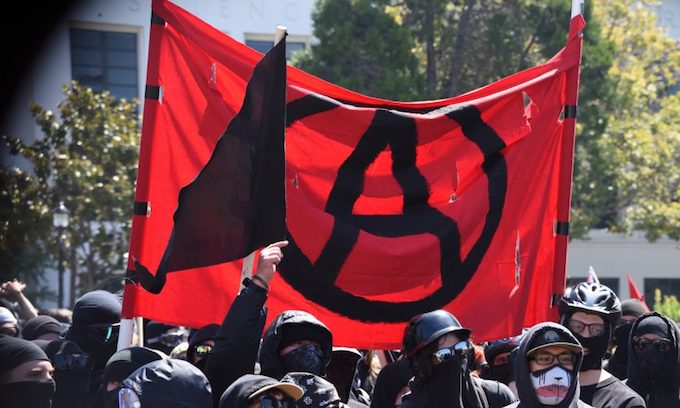
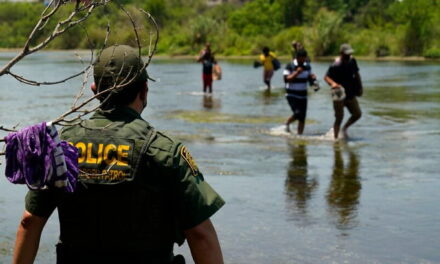
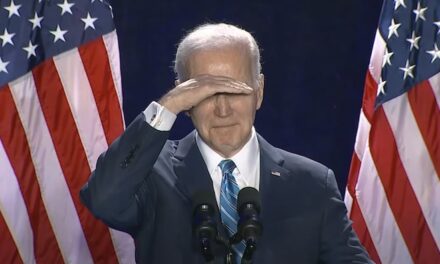
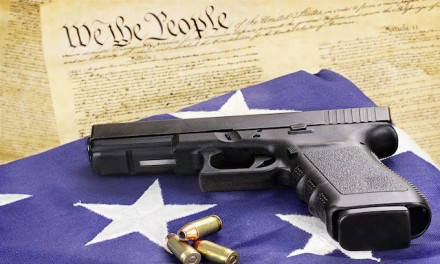
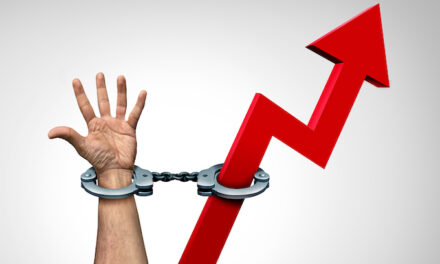






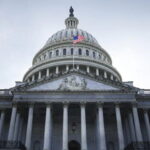
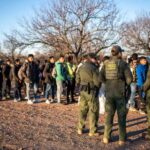


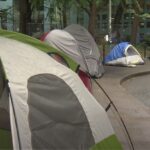
Oregon and Washington could have done this long ago but first they would have to want to shut Antifa down and they don’t.
GOOD. LOCK THEM UP for life!